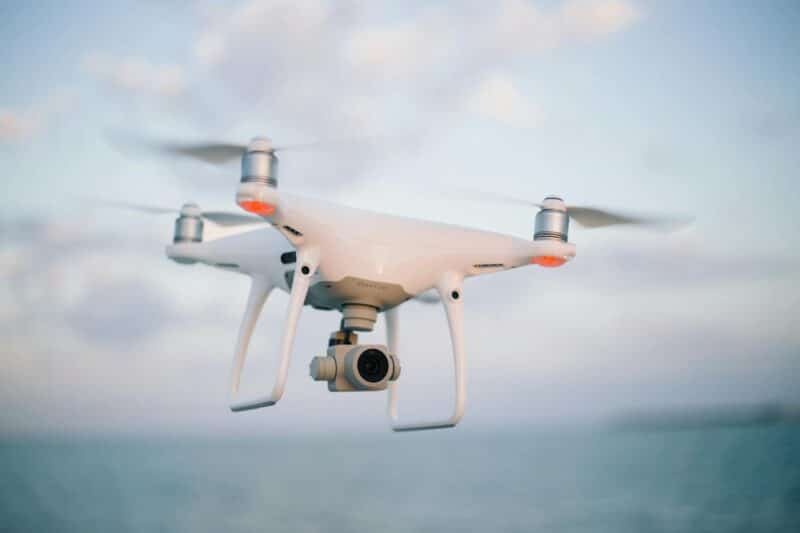Horse racing is a sport where a lot of things happen in seconds and sometimes it is hard to see what’s really happening on the racecourse. However, over the years, organizers of horse races have focused on improving the viewer’s perspective of the races by including other technologies that offer a better perspective for the spectators and those watching the races at home.
But as technology advances, we might have the perfect solution for horse racing. Drones!
Drones are perfect for covering horse racing events for a couple of reasons. First of all, the technology used in drones allows seamless video streaming with smooth footage thanks to the stabilization features of drones.
On top of that, drones have advanced a lot and nowadays even small drones can provide 4K video footage at high resolution. This means that the use of smaller drones is not only more convenient but also safer for all the people on the ground if things go wrong.
However, the introduction of drone technology in horse racing didn’t go as smoothly as most of us thought due to privacy concerns and other problems.
In today’s article, we will explore the use of drones in modern horse racing.
Drones in Horse Racing
The idea of using drones in horse racing actually makes a lot of sense. This can provide better viewing angles for the public, and a different perspective which is really important for the overall user experience. In fact, we have seen drones flying on some of the most popular races like the Kentucky Derby.
If you want to find out all other major North American race tracks, visit the link below: https://www.twinspires.com/edge/racing/tracks/
However, there are a few technical problems before we can say that this technology is here to stay.
First of all, most of the racecourses are in the countryside without a good internet connection (apart from the big racecourses like Churchill Downs obviously). This means that drones wouldn’t be able to capture the entire race in HD with a seamless connection. But we can work around this issue and solve it eventually.
Another thing to consider is safety. Drones flying over the horses in an actual race can cause mayhem if things go sideways. Additionally, there aren’t any regulations in terms of drone use on the track. So, if the sport wants to fully incorporate drones observing the track, we need certain rules that will make the entire process safer for the participants.
After all, you wouldn’t want a drone falling from the sky while you are galloping with a horse at 40 Mph.
The Dark Side of Drones:
But all of these issues don’t explain why the horse racing community has such a negative opinion of drones. They are issues that can be overcome, right?
Well, the negative opinion on drones comes from a different thing.
We know that betting is a huge part of horse racing, and some people were clever enough to use drone technology to gain an unfair advantage while betting.
Imagine setting up a drone near a racecourse and getting the live data. As you probably already know, there is a delay in the broadcast when the races are streamed on TV, so technically, the one that operates the drone gets to see what’s happening in the race before everyone else.
Then they make a bet on the already confirmed outcome in seconds and walk away profitable.
Surprisingly, there are no rules in place that prohibit the usage of drones on racetracks.
This makes it a difficult subject that is costing bookmakers and broadcast rights holders a lot of money because there is still no law in place that prohibits drone owners from flying their devices at horse racing meetings – delivering live footage that outperforms the time-delayed content provided by contracted media outlets.
Punters who have access to the live broadcast may observe how a race is unfolding a second or two faster than everyone else viewing remotely, allowing them to wager intelligently with the bookies and on the exchanges.
When a horse race is sent from the racetrack to a live feed on a betting app or even to TV networks airing the meeting, there is ‘latency‘ – or lag – of between 0.5-3 seconds, according to the techies.
The use of drones to live-stream horse races throughout the UK has been a recurring flashpoint in recent years, as participants have grown increasingly numerous, daring, and hostile. There appear to be two broad methods to what appears to be a pretty profitable business.
As the final results of ongoing races become evident, pilots may broadcast live footage straight to gambling customers who utilize web apps to place bets. Alternatively, drone operators may use the real-time footage to place bets with considerably greater payout odds.
That’s why we are seeing anti-drone movements by some of the racetracks.
The Preakness Stakes and Pimlico Race Course wants to keep drones from disrupting operations and/or filming illegally. Drones posed a physical risk to the horses, riders, and spectators. To ensure drone-free race day operations, perimeter security had to be extended into the skies.
Final Words:
Drone technology can do so much good for the sport, but it is not a subject fully regulated yet, and we are still witnessing some people using the technology to gain an advantage. In the end, drones can offer a better perspective of horse races, which is why some racecourses already deployed their drones.
In the future we think that drone use in horse racing will increase, allowing fans a better view of the action.









